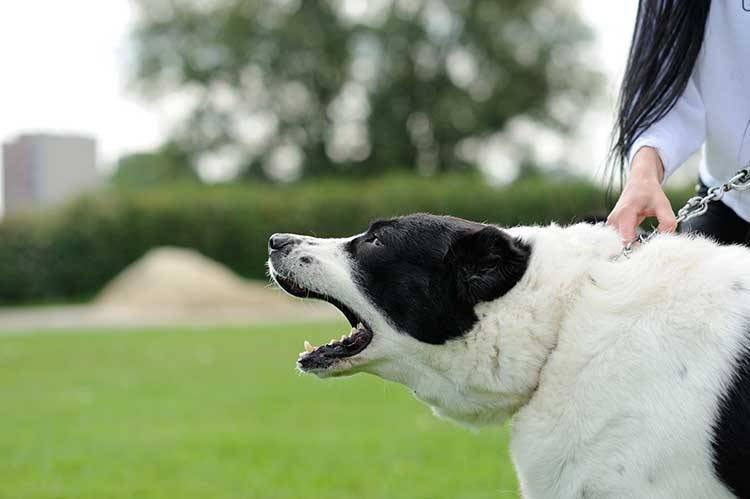Why You Shouldn’t Walk Your Aggressive Dog
Yes, this is a very strong statement, but allow me to explain why you shouldn’t walk your aggressive dog in public. As a professional dog trainer, who works mostly with reactive dogs, there’s a reason for this strong position. Of course, it’s a free country and you can make your own decisions, but are your choices making things worse? If you share your home with a reactive dog that displays aggression in public, take a moment and think twice before leashing your dog up.
Do Public Walks Help Your Dog?
Think about this question from your dog’s perspective. If your dog lunges, barks, growls, shakes, refuses to walk forward and displays fearful body language, then your dog doesn’t like public walks. Most pet owners walk their fearful dogs in public, hoping their dogs will overcome their fears.
This is a tough way to change your dog’s behavior; it’s equivalent to asking a fearful person to walk along a bed of snakes, so he learns snakes are safe. When dogs are afraid of people or other dogs, yet are asked to walk amongst them, they are just as terrified. Plus, walking a fearful dog in public will only deepen a dog’s fearful behavior, so she will react aggressively more often.
Change Behavior With Minimal Distractions First
Pet owners wanting to change their dog’s fears is completely understandable, and what’s best for the dog. Start in a quiet environment with a certified positive reinforcement dog trainer, and move at your dog’s pace. Think about it this way: It’s best to teach a fearful person snakes are safe by introducing one snake at a time. Hold the snake far away, while giving the person $100 bills when he chooses to look at it without freaking out.
Pairing good things with scary things works, but must happen in a controlled environment to be effective. Once a dog learns that scary things make good things appear, she will become less fearful—however, this takes time.
Your Dog’s Aggression Causes Ripples in Public
When dogs bark and lunge at other dogs or people in public, it sends out a negative ripple effect. No one enjoys being barked at by a scared dog—not even other dogs. When this happens, dogs, puppies, people and children learn that dogs are scary and learn to avoid them. Soon, they become fearful of other dogs all because a dog behaved aggressively to them once. Yes, it can take one bad situation to scare a dog, puppy, person or child permanently.
Walking an aggressive dog in public definitely makes the situation worse for everyone, especially your fearful dog.






